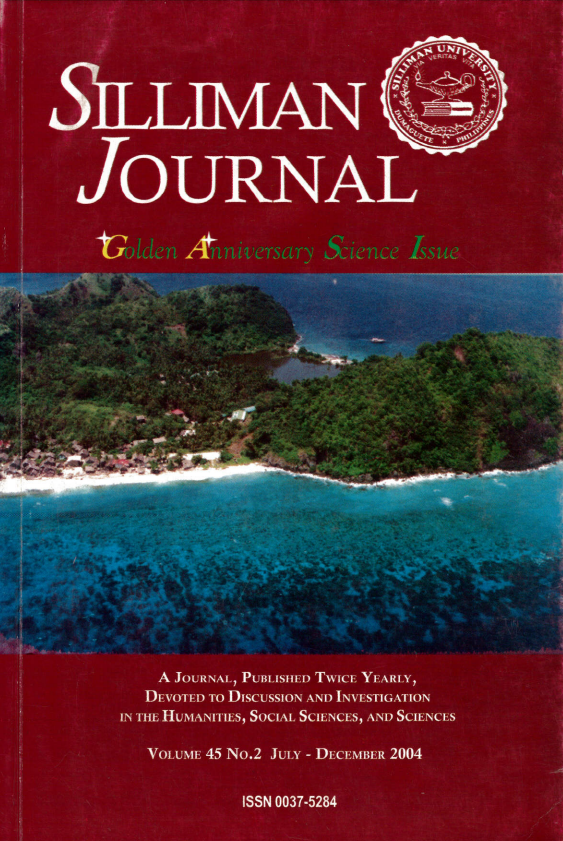Lead and Zinc Concentrations in the Venus Clam, Paphia Textile (Gmelin) in Soft- Bottom Communities of Katipunan and Roxas, Zamboanga Del Norte: An Indicator of Heavy Metal Contamination
Abstract
Infaunal bivalve communities are known to pose potential public health risks as they are bioaccumulators that may be regularly harvested for human consumption. To assess a possible health risk of heavy metal contamination from factory waste output, samples of the locally-consumed venus clam, Paphia textile were collected from nearshore soft-bottom communities of Katipunan and Roxas Zamboanga del Norte. They were analyzed for lead and zinc concentrations. The highest levels of lead (mean ± SD 4.43 ± 1.23 mg/kg) and zinc (mean ± SD = 30.09 ± 9.40) were obtained from the Tuburan site, located nearest the Southern Island Oil Mill Port Area. The concentration levels from our sampling sites indicated that the coastal waters of Katipunan and Roxas, Zamboanga del Norte are contaminated with both lead and zinc. Continued consumption of the clams will lead to biological magnification in human populations, thus posing an unquantified health risk to local coastal communities consuming these animals.


